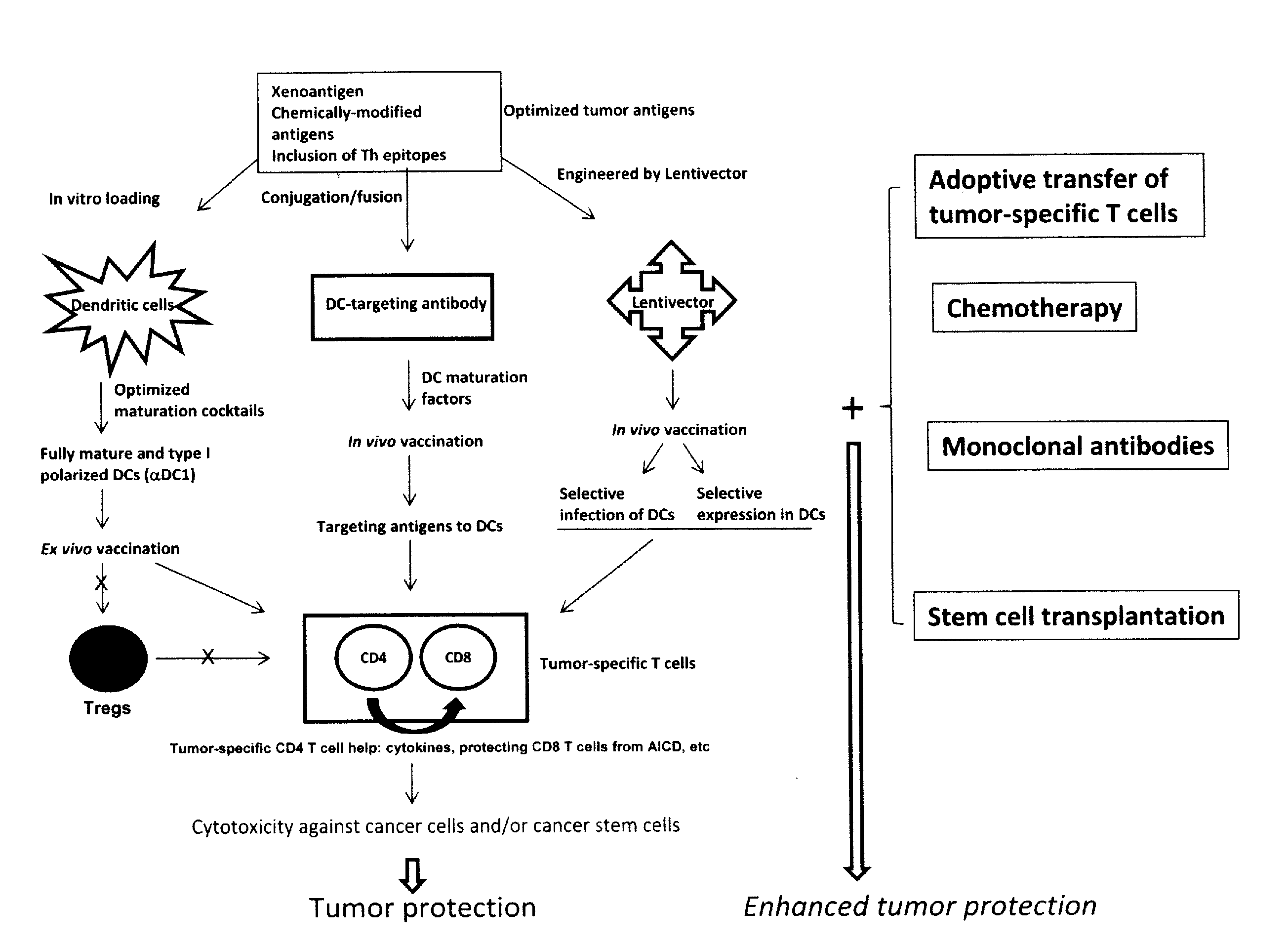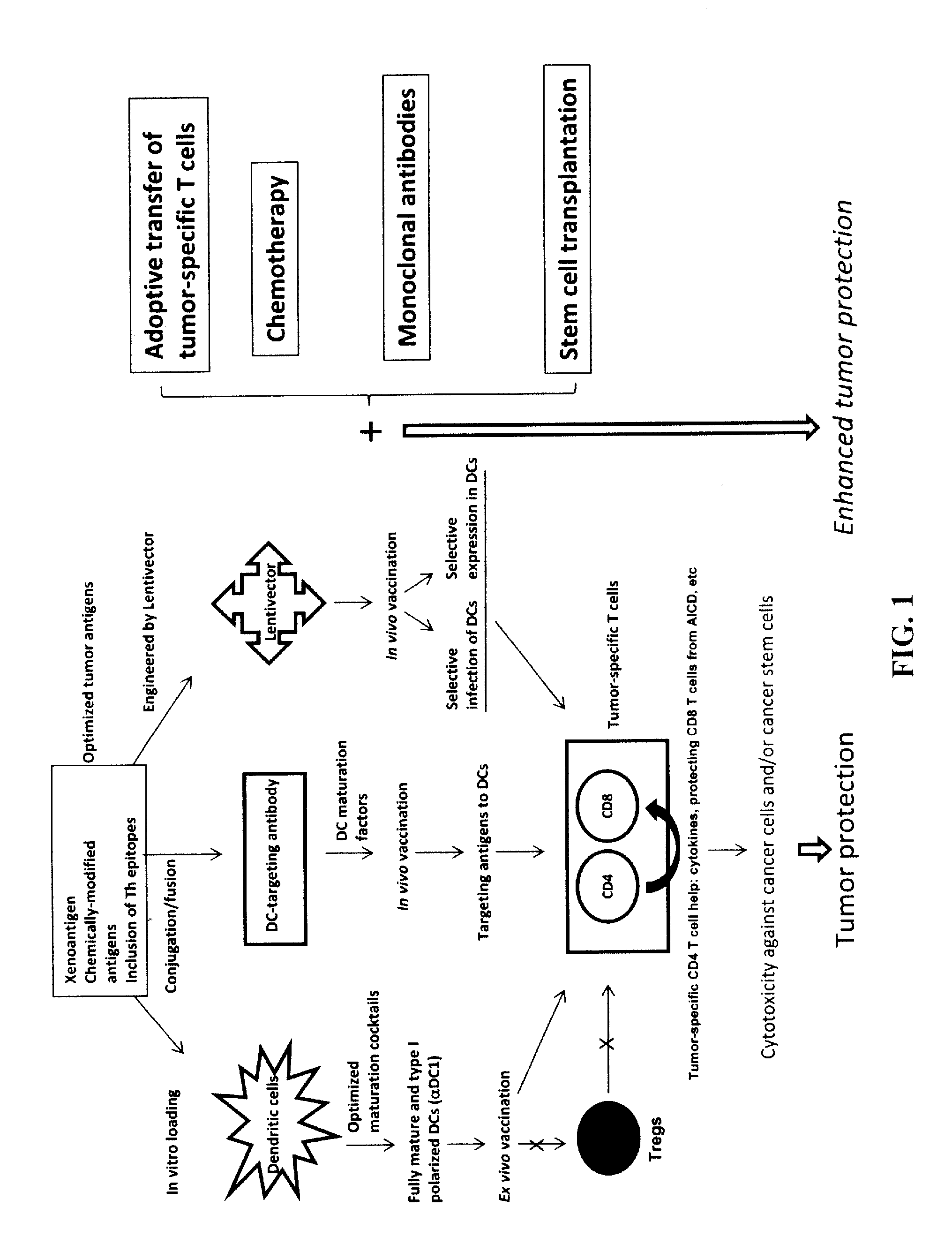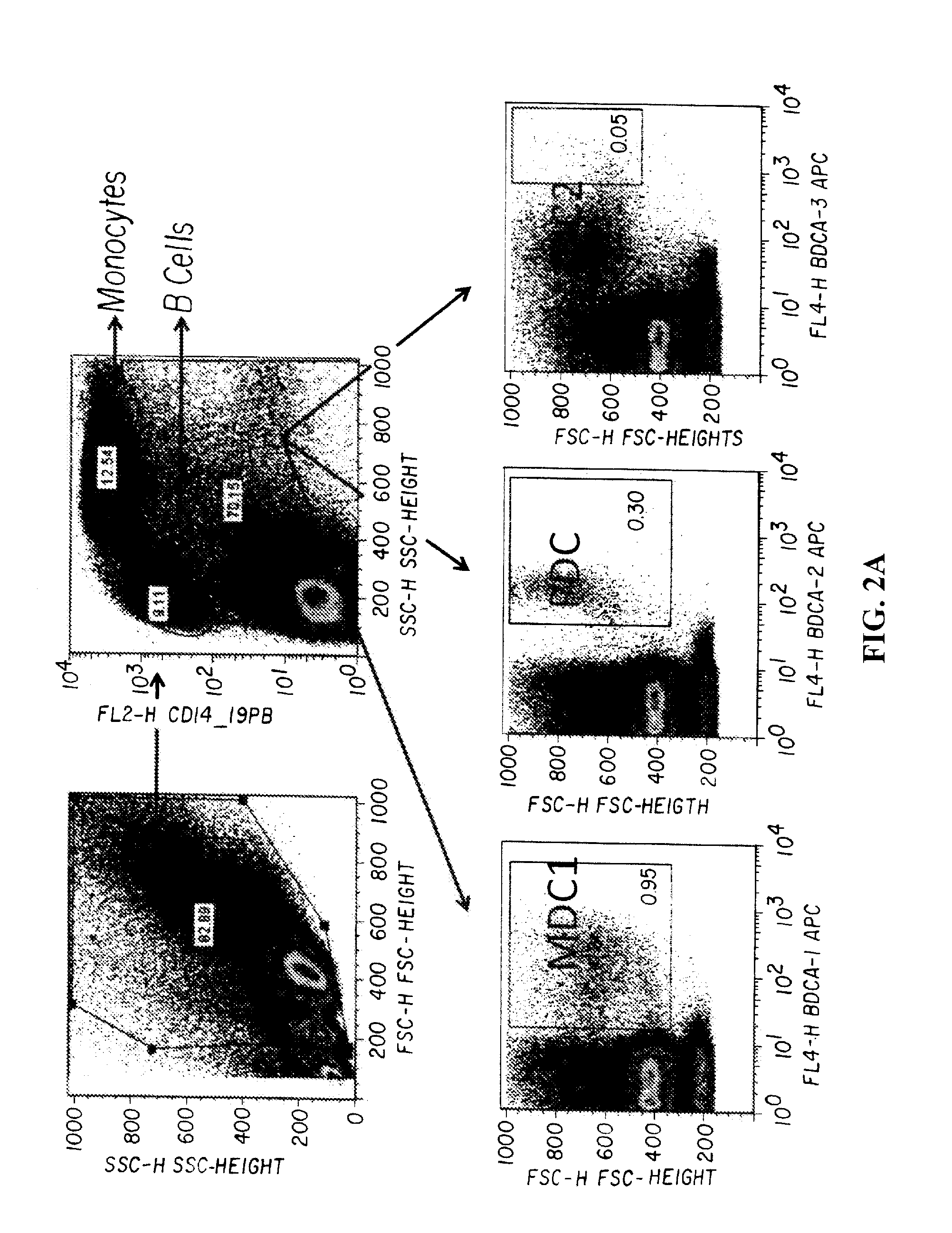Novel Strategies for Improved Cancer Vaccines
a cancer vaccine and novel technology, applied in the field of vaccine composition and method, can solve the problems of long effort to produce cancer vaccines that have not succeeded, and limit their wide application
- Summary
- Abstract
- Description
- Claims
- Application Information
AI Technical Summary
Benefits of technology
Problems solved by technology
Method used
Image
Examples
example 1
Preparation of Dock-and-Lock (DNL) Constructs
[0181]Exemplary DNL-vaccine constructs may be formed by combining, for example, an Fab-DDD fusion protein of an anti-CD74 antibody with a CD20-AD fusion protein. Alternatively, constructs may be made that combine IgG-AD fusion proteins with CD20-DDD fusion proteins. The technique is not limiting and any protein or peptide of use may be produced as an AD or DDD fusion protein for incorporation into a DNL construct. Where chemical cross-linking is utilized, the AD and DDD conjugates are not limited to proteins or peptides and may comprise any molecule that may be cross-linked to an AD or DDD sequence using any cross-linking technique known in the art.
[0182]Independent transgenic cell lines may be developed for each DDD or AD fusion protein. Once produced, the modules can be purified if desired or maintained in the cell culture supernatant fluid. Following production, any DDD-fusion protein module can be combined with any AD-fusion protein m...
example 2
CH3-AD2-IgG Expression Vectors
[0216]A plasmid shuttle vector was produced to facilitate the conversion of any IgG-pdHL2 vector into a CH3-AD2-IgG-pdHL2 vector. The gene for the Fc (CH2 and CH3 domains) was amplified by PCR using the pdHL2 vector as a template and the following oligonucleotide primers:
Fc BglII LeftAGATCTGGCGCACCTGAACTCCTG(SEQ ID NO: 26)Fc Bam-EcoRI RightGAATTCGGATCCTTTACCCGGAGACAGGGAGAG(SEQ ID NO: 27)
[0217]The amplimer was cloned in the pGemT PCR cloning vector (Promega). The Fc insert fragment was excised from pGemT with Xba I and Barn HI and ligated with AD2-pdHL2 vector that was prepared by digesting h679-Fab-AD2-pdHL2 (Rossi et al., Proc Natl Acad Sci USA 2006, 103:6841-6) with Xba I and Barn HI, to generate the shuttle vector Fc-AD2-pdHL2. To convert IgG-pdHL2 expression vectors to a CH3-AD2-IgG-pdHL2 expression vectors, an 861 by BsrG I / Nde I restriction fragment was excised from the former and replaced with a 952 by BsrG I / Nde I restriction fragment excised f...
example 3
Production of CH3-AD2-IgG
[0224]Transfection and selection of stable CH3-AD2-IgG secreting cell lines
[0225]All cell lines were grown in Hybridoma SFM (Invitrogen, Carlsbad Calif.). CH3-AD2-IgG-pdHL2 vectors (30 μg) were linearized by digestion with Sal I restriction endonuclease and transfected into Sp2 / 0-Ag14 (2.8×106 cells) by electroporation (450 volts, 25 μF). The pdHL2 vector contains the gene for dihydrofolate reductase allowing clonal selection as well as gene amplification with methotrexate (MTX).
[0226]Following transfection, the cells were plated in 96-well plates and transgenic clones were selected in media containing 0.2 μM MTX. Clones were screened for CH3-AD2-IgG productivity by a sandwich ELISA using 96-well microtitre plates coated with specific anti-idiotype MAbs. Conditioned media from the putative clones were transferred to the micro-plate wells and detection of the fusion protein was accomplished with horseradish peroxidase-conjugated goat anti-human IgG F(ab′)2 (J...
PUM
| Property | Measurement | Unit |
|---|---|---|
| Therapeutic | aaaaa | aaaaa |
| Immunogenicity | aaaaa | aaaaa |
Abstract
Description
Claims
Application Information
 Login to View More
Login to View More - R&D
- Intellectual Property
- Life Sciences
- Materials
- Tech Scout
- Unparalleled Data Quality
- Higher Quality Content
- 60% Fewer Hallucinations
Browse by: Latest US Patents, China's latest patents, Technical Efficacy Thesaurus, Application Domain, Technology Topic, Popular Technical Reports.
© 2025 PatSnap. All rights reserved.Legal|Privacy policy|Modern Slavery Act Transparency Statement|Sitemap|About US| Contact US: help@patsnap.com



